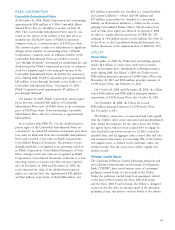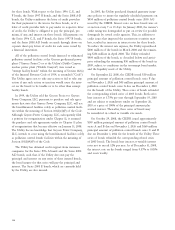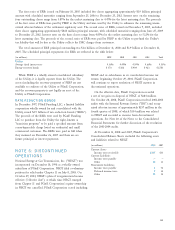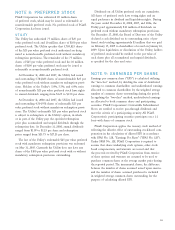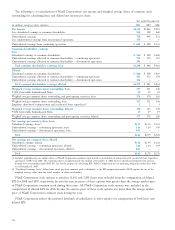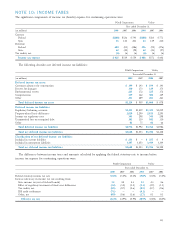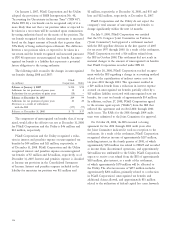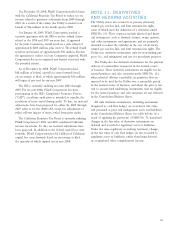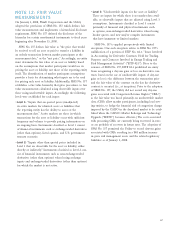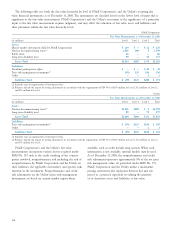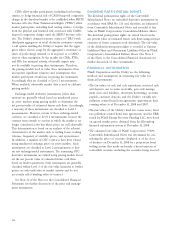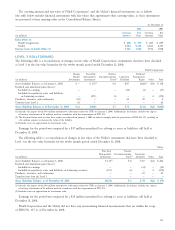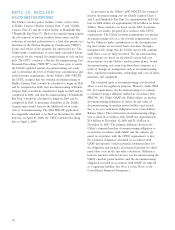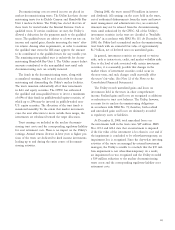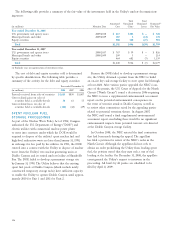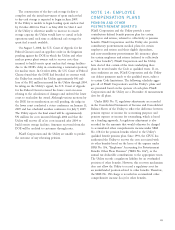PG&E 2008 Annual Report Download - page 117
Download and view the complete annual report
Please find page 117 of the 2008 PG&E annual report below. You can navigate through the pages in the report by either clicking on the pages listed below, or by using the keyword search tool below to find specific information within the annual report.115
NOTE 11: DERIVATIVES
AND HEDGING ACTIVITIES
The Utility enters into contracts to procure electricity,
natural gas, nuclear fuel, and fi rm transmission rights,
some of which meet the defi nition of a derivative under
SFAS No. 133. These contracts include physical and fi nan-
cial instruments, such as forwards, futures, swaps, options,
and other instruments and agreements, and are primarily
intended to reduce the volatility in the cost of electricity,
natural gas, nuclear fuel, and fi rm transmission rights. The
Utility uses derivative instruments only for non-trading pur-
poses (i.e., risk mitigation) and not for speculative purposes.
The Utility also has derivative instruments for the physical
delivery of commodities transacted in the normal course
of business. These derivative instruments are eligible for the
normal purchase and sales exception under SFAS No. 133,
where physical delivery is probable, in quantities that are
expected to be used by the Utility over a reasonable period
in the normal course of business, and where the price is not
tied to an unrelated underlying. Instruments that are eligible
for the normal purchase and sales exception are not refl ected
in the Consolidated Balance Sheets.
All such derivative instruments, including instruments
designated as cash fl ow hedges, are recorded at fair value
and presented as price risk management assets and liabilities
in the Consolidated Balance Sheets (see table below). As a
result of applying the provisions of SFAS No. 71, unrealized
changes in the fair value of derivative instruments are
deferred and recorded to regulatory assets or liabilities.
Under the same regulatory accounting treatment, changes
in the fair value of cash fl ow hedges are also recorded to
regulatory assets or liabilities, rather than being deferred
in accumulated other comprehensive income.
On December 24, 2008, PG&E Corporation fi led claims
with the California Franchise Tax Board to reduce tax on
income related to generator settlements from 2004 through
2007. As a result of the claims, the Utility recorded a tax
benefi t of $16 million in the fourth quarter 2008.
On January 30, 2009, PG&E Corporation reached a
tentative agreement with the IRS to resolve refund claims
related to the 1998 and 1999 tax years that, if approved
by the Joint Committee, would result in a cash refund of
approximately $200 million, plus interest. The refund would
result in net income of approximately $50 million. Because
the agreement is subject to Joint Committee approval, PG&E
Corporation has not recognized any benefi t associated with
the potential refund.
As of December 31, 2008, PG&E Corporation had
$68 million of federal capital loss carry forwards based
on tax returns as fi led, of which approximately $30 million
will expire if not used by tax year 2009.
The IRS is currently auditing tax years 2005 through
2007. For tax year 2008, PG&E Corporation has been
participating in the IRS’s Compliance Assurance Process
(“CAP”), a real-time audit process intended to expedite the
resolution of issues raised during audits. To date, no material
adjustments have been proposed for either the 2005 through
2007 audit or for the 2008 CAP, except for adjustments to
refl ect rollover impact of items settled from prior audits.
The California Franchise Tax Board is currently auditing
PG&E Corporation’s 2004 and 2005 combined California
income tax returns. To date, no material adjustments have
been proposed. In addition to the federal capital loss carry
forwards, PG&E Corporation has $2.1 billion of California
capital loss carry forwards based on tax returns as fi led,
the majority of which expired in tax year 2008.


